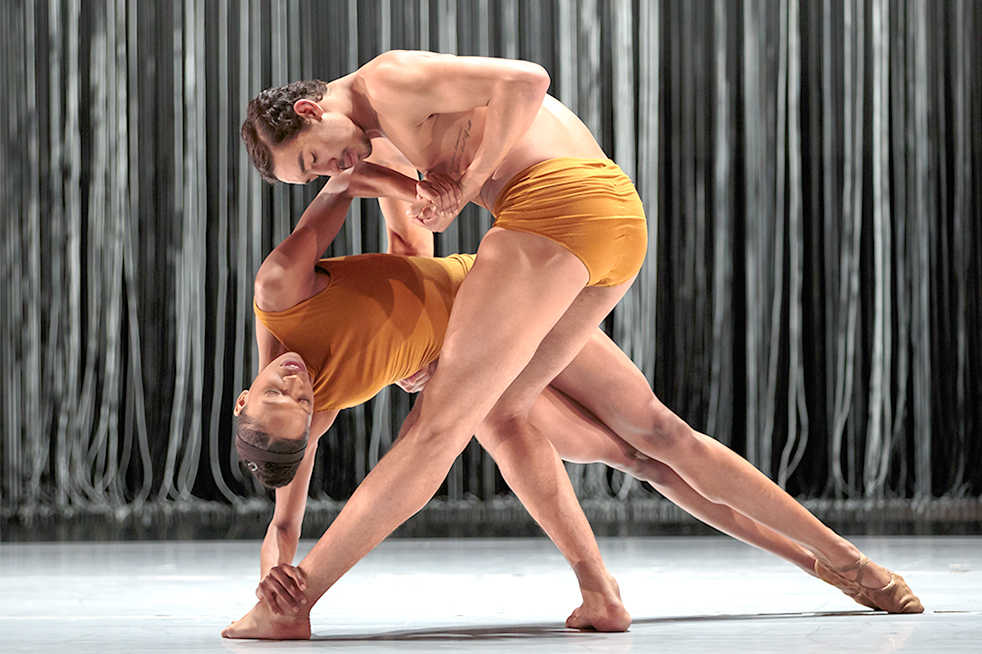Toes planted like roots against the stage floor, arms flexed and flowing around, weaving magic with each motion. Alonzo King has created a captivating piece in “Biophony,” which was performed at the Ferst Center for the
Arts on Jan. 14.
The Lines Ballet Company performed another contemporary ballet piece choreographed by King, “Sand.” Set to the sounds of jazz, the pairing of music and choreography was a
novel combination.
“Biophony” was a revelation because King chose to use noises from nature, such as the rumblings of birds or the whispers of humpback whales. The sounds were arranged by Bernie Krause, noted musician and ecologist.
The costuming was an ode to the music. Feathered pants and an ostrich skirt made a striking appearance. The dancers acted like the animals in the natural symphony.
In one sequence, the dancers gathered on stage to the sound of buzzing while their bodies gracefully emulated a hive of bees.
Sometimes, hands followed feet on the ground as they echoed orangutans and other quadrupedal animals. The naturalist feel of the sounds and motion of the jungle contrasted with elegant pas de duex (dance duets) set to the haunting calls ofhumpback whales.
The second half of the show, “Sand,” was more conformist, using jazz rather than the sounds of a jungle. The program gave an in-depth explanation of the connection of sand to the show.
“Its particular nothingness and its potential for unimaginable power has caused minds to liken sand to human beings for eons,” King said.
However, this connection between the choreography and the theme was difficult to perceive in the actual performance. The piece used a curtain of strings that were occasionally disturbed, probably to give the illusion of sand falling. A few times, dancing took place behind the curtain upon a raised stage. This staging was fairly gimmicky and did not seem to fit with the rest of the piece.
However, what did work wonderfully and what was an interesting dichotomy was the combination of the Jazz music accompanying the dancers.
Jazz is a poignant genre whose greats were known for their improvisational skills with the building blocks of the music. The choreography, on the other hand, is planned down to the precise movement of the tips of each finger.
Both of the pieces by the company showcased immense physical talent. The dancers supported their body weights against the floor in unbelievable positions. The impressive intensity of their dance was heightened by the absence of struggle on their faces. Even as the second hour came to an end, the only indication of physical exertion were their coatings of sweat and the rhythmic beating of their diaphragms.
Under the exotic choreography, the foundation of skillful ballet technique was apparent. The most awe-inspiring moments of the show were when ballet skills were leveraged to showcase the raw sounds of nature and the classic sounds of saxophone.
A quick look around the audience revealed that the attendees wore quite a range of attire, from t-shirts to gowns. This highlighted the diverse appeal of the company — it attracted both dancers and art enthusiasts from many different backgrounds.
Since the show was at the Ferst Center, students received a discounted $10 rate and unrestricted seat choice. Annoyingly enough, one theater tech employee wore a distracting bright red shirt backstage instead of the usual black.
Despite this issue, the Lines Ballet Company’s performance was phenomenal, and Alonzo King’s choreography was masterful. Every movement by the dancers was controlled yet fluid. Even the drops of sweat pouring down their faces were gracefully flung to the ground with each strong turn.
